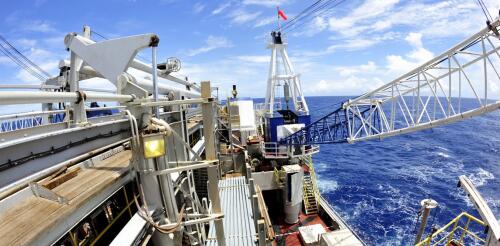Marine sediments
My favorite place in the world isn’t a fixed location. It’s the JOIDES Resolution, an internationally funded research ship that has spent its service life constantly on the move, from deep in the Antarctic to high in the Arctic. Since 1985, scientific expeditions on this one-of-a-kind oceangoing laboratory have drilled 230 miles (370 kilometers) of sediment and rock cores – long cylindrical samples that provide a unique view of the ocean floor. The cores come from a thousand different locations, enabling scientists from many universities around the world to explore changes within the Earth. They also provide a window into our planet’s history. The ocean floor preserves a geological library that documents millions of years of climate change and evolution. The JOIDES Resolution leaves Honolulu in 2009. IODP/Wikipedia, CC BY Sadly, the JOIDES Resolution, also known as the JR...
Over the past century, the Earth’s average temperature has swiftly increased by about 1 degree Celsius (1.8 degrees Fahrenheit). The evidence is hard to dispute. It comes from thermometers and other sensors around the world. But what about the thousands of years before the Industrial Revolution, before thermometers, and before humans warmed the climate by releasing heat-trapping carbon dioxide from fossil fuels? Back then, was Earth’s temperature warming or cooling? Even though scientists know more about the most recent 6,000 years than any other multimillennial interval, studies on this long-term global temperature trend have come to contrasting conclusions. To try to resolve the difference, we conducted a comprehensive, global-scale assessment of the existing evidence, including both natural archives, like tree rings and seafloor sediments, and climate models. Our results, published Feb. 15, 2023, suggest ways to improve climate forecasting to avoid missing some...

